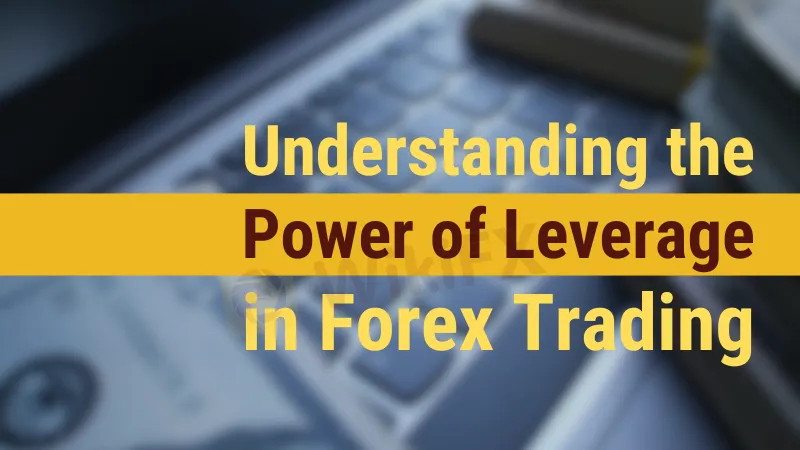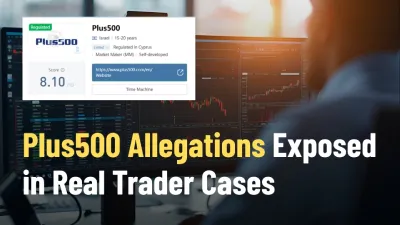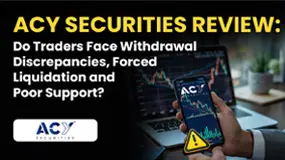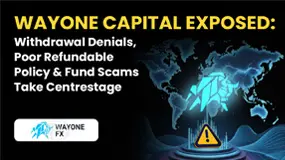简体中文
繁體中文
English
Pусский
日本語
ภาษาไทย
Tiếng Việt
Bahasa Indonesia
Español
हिन्दी
Filippiiniläinen
Français
Deutsch
Português
Türkçe
한국어
العربية
Understanding the Power of Leverage in Forex Trading
Abstract:Master the art of leverage in forex trading with our comprehensive guide. Learn how to maximize profits while managing risks effectively.

Introduction to Leverage in the Forex Market
Leverage in forex trading represents the strategy of using borrowed funds to increase potential investment returns. It's a widely utilized concept in the forex market, allowing traders to control positions that far exceed their actual capital. This approach can significantly enhance profits from favorable currency exchange rate movements. However, the use of leverage is akin to a double-edged sword, as it also amplifies potential losses. Understanding and effectively managing leverage, along with employing robust risk management strategies, is crucial for anyone participating in the forex market.
The Forex Market: A Global Trading Platform

As the world's largest financial market, the forex market boasts more than $5 trillion in daily transactions. Traders engage in the buying and selling of currencies, seeking to benefit from changes in exchange rates. The market operates on the bid-and-ask prices provided by brokers. If an investor wants to buy a currency, they pay the asking price, and when selling, they receive the bid price. The difference between these prices represents the trader's profit or loss, depending on the currency's movement.
Understanding Leverage in Forex Trading
Leverage in forex is essentially a loan provided by the broker to the investor. It allows traders to open larger positions than their capital would typically permit. Forex accounts are set up to enable trading on margin – using borrowed funds. While new traders might face limits on the amount of leverage they can use, more experienced traders often have the flexibility to choose their desired level of leverage. However, brokers require a certain percentage of the trade's total value to be kept in the account as the initial margin.
| Margin Requirement | Leverage Ratio |
| 2% | 50:1 |
| 1% | 100:1 |
| .5% | 200:1 |
Different Leverage Ratios and Their Impact
The leverage ratio is crucial in forex trading as it determines how much a trade's size is increased by the employed margin. For example, a 100:1 leverage ratio means that a $1,000 deposit allows a trader to control a $100,000 position. The initial margin requirement varies among brokers and directly affects the leverage available to a trader. Typically, a lower margin requirement offers higher leverage, increasing both the potential return and risk.
Exploring Trade Sizes and Margin Requirements
Forex trades range from standard lots (100,000 units of currency) to smaller amounts. Leverage ratios and margin requirements vary with trade size. Larger trades might attract lower leverage like 50:1, requiring a 2% margin. These requirements fluctuate based on the currency pair and market conditions. High volatility in emerging market currencies often leads to higher margin requirements.
The Risks of Forex Leverage

The use of leverage in forex trading can lead to significant profits but also substantial losses. The risk is magnified, as demonstrated by comparing different leverage strategies. For example, a trader using 50 times leverage could experience drastic financial outcomes compared to one using less leverage. Understanding leverage mechanics and employing risk management strategies is vital for traders.
Detailed Analysis of Leverage in Forex Trading
Forex leverage allows traders to access significant sums of money without needing the full amount of capital typically required for such trades. This capability enables traders to magnify their trading results, but it also increases the potential for substantial losses.
Leverage and Its Role in Profit Maximization
The primary purpose of using leverage in forex trading is to amplify potential profits. When a trader predicts the market movement correctly, leverage can significantly boost their returns. For instance, if a currency pair moves favorably by a small percentage, the actual return on the traders equity can be much larger due to the leveraged position.
Diverse Types of Leverage Ratios
Leverage ratios in forex can range widely, from as low as 5:1 to as high as 500:1, depending on the broker and the traders experience and risk appetite. These ratios provide traders with flexibility in their trading strategies, allowing them to choose a level of leverage that aligns with their risk tolerance and trading objectives.
Case Studies: Leverage in Action
To illustrate the impact of leverage, consider two traders with different approaches. Trader A uses a high leverage of 100:1, while Trader B opts for a more conservative 10:1 leverage. In a favorable market scenario, Trader A‘s profits are substantially higher than Trader B’s. However, in an adverse market move, Trader A also faces much greater losses, potentially wiping out a significant portion of its capital.
| Trader A | Trader B | |
| Trading Capital | $10,000 | $10,000 |
| Real Leverage Used | 50 times | 5 times |
| Total Value of Transaction | $500,000 | $50,000 |
| In the Case of a 100-Pip Loss | -$4,150 | -$415 |
| % Loss Of Trading Capital | 41.5% | 4.15% |
| % of Trading Capital Remaining | 58.5% | 95.8% |
Strategies for Managing Leverage Risks
Effective risk management is crucial in leveraged forex trading. This includes setting stop-loss orders to limit potential losses, monitoring trades closely, and being aware of market events that could cause significant price movements. Traders should also avoid over-leveraging their positions and should diversify their investments to spread risk.
The Impact of Market Volatility on Leverage
Market volatility can significantly affect leveraged trades. During periods of high volatility, even small price movements can lead to large gains or losses. Traders need to be especially cautious during such times and may need to adjust their leverage and margin requirements accordingly.
Regulatory Aspects of Forex Leverage

Regulations on leverage vary by country and are put in place to protect traders from the risks associated with high leverage. For instance, in some jurisdictions, the maximum allowable leverage is capped to prevent excessive risk-taking by traders. Understanding these regulations is important for traders to ensure compliance and to make informed decisions about their trading strategies.
Advanced Techniques in Leveraged Forex Trading
Experienced traders often use advanced techniques like hedging and scalping to manage risks associated with leverage. Hedging involves opening multiple positions to offset potential losses, while scalping involves making quick trades to capitalize on small market movements. These techniques require a deep understanding of the market and should be used cautiously.
Leverage in Different Forex Instruments
Different forex instruments, such as currency pairs, CFDs (Contracts for Difference), and futures, offer varying levels of leverage. Traders should understand the specifics of each instrument, including the leverage available and the associated risks.
Conclusion: Balancing Reward and Risk with Leverage
Leverage in forex trading can be a powerful tool for amplifying returns but comes with significant risks. Traders must carefully consider their use of leverage, understand the associated risks, and employ sound risk management strategies. By doing so, they can leverage the power of borrowed capital to potentially enhance their trading performance while keeping potential downsides in check. As with any investment strategy, education, careful planning, and disciplined execution are key to successfully using leverage in forex trading.

Disclaimer:
The views in this article only represent the author's personal views, and do not constitute investment advice on this platform. This platform does not guarantee the accuracy, completeness and timeliness of the information in the article, and will not be liable for any loss caused by the use of or reliance on the information in the article.
Read more

Plus500 Allegations Exposed in Real Trader Cases
Plus500 allegations revealed: trader complaints, withdrawal delays, and regulatory oversight explained in detail.

Upway Broker Scam: Trade Manipulation Exposed!
Upway Scam Alert: Broker faces backlash for backend manipulation, severe slippage, and withdrawal blocks. Real trader exposures uncovered.

ACY SECURITIES Review: Do Traders Face Withdrawal Discrepancies, Forced Liquidation and Poor Support
Does ACY SECURITIES wipe out your trading gains in the name of scalping arbitrage? Do you find their demand for inventory fees illegitimate? Do you sense a Ponzi scam-like investment when trading through the broker? Have you faced a forced liquidation of your forex positions by ACY SECURITIES? There have been a plethora of forex trading complaints against the broker. Read on as we share the ACY SECURITIES review in this article.

Wayone Capital Exposed: Withdrawal Denials, Poor Refundable Policy & Fund Scams Take Centrestage
Failed to receive funds despite initiating the Wayone Capital withdrawal request? Have you found the broker’s refundable policy manipulative? Did Wayone Capital block your investment fund? Do you constantly face technical issues at Wayone Capital? Many traders have vehemently opposed these scam-like tactics on broker review platforms. In this Wayone Capital review article, we have shared many such complaints. Take a look!
WikiFX Broker
Latest News
Absolute Markets 2025: Is It Scam or Safe? Suitable for Traders in Pakistan?
Offshore Forex Brokers Ramp Up Expansion in Vietnam as Authorities Crack Down on Scams
'Worse Than COVID': Weak US Manufacturing Surveys Signal Stagflation In November
Scam Alert: 8,500 People Duped with Fake 8% Monthly Return Promises from Forex and Stock Investments
UK snack brand Graze to be sold to Jamie Laing\s Candy Kittens
FTMO Completes Acquisition of Global CFDs Broker OANDA, Marking a Major Milestone
HEADWAY: The Fast Track to Financial Dead-Ends?
November private payrolls unexpectedly fell by 32,000, led by steep small business job cuts, ADP reports
Plus500 Allegations Exposed in Real Trader Cases
US Industrial Production Sees Biggest Annual Gain In 3 Years Despite Slowing Capacity Utilization
Currency Calculator



